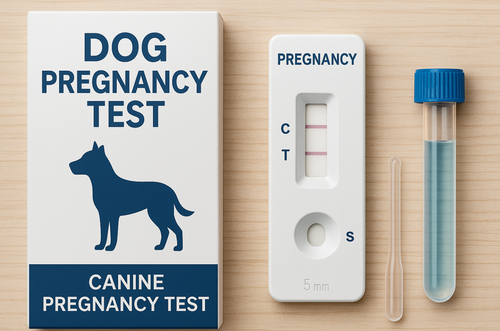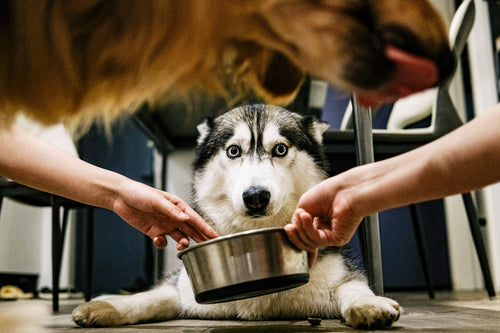Introduction
As pet owners, one of our biggest worries is waking up and noticing that something is off with our dog. Maybe they’re not eating, seem unusually tired, or are vomiting. Searching for “sick dog symptoms” or “symptoms dog sick” is one of the most common things dog owners do when they suspect their pet is unwell.
The challenge is that dogs can’t tell us what’s wrong. Their body language and behaviour are the only clues we have, which is why knowing the early signs of illness in dogs is so important.
This guide explores the most common symptoms of a sick dog, highlights red flags you should never ignore, and shares links to expert advice from veterinarians.
Why Recognising Sick Dog Symptoms Matters

Catching illness early can make the difference between a quick treatment and a serious health emergency. According to the American Kennel Club, many conditions—from digestive upset to infections—are easier to treat when detected early.
By learning to recognise common symptoms, you can act quickly, either by monitoring at home or contacting your vet for professional advice.
Common Sick Dog Symptoms

1. Changes in Appetite or Drinking
-
Eating less or refusing food: Skipping one meal isn’t unusual, but refusing food for more than 24 hours can signal illness.
-
Excessive drinking: May point to diabetes, kidney disease, or hormonal imbalances.
-
Loss of interest in treats: A clear red flag, especially in normally food-driven dogs.
Expert advice: The RSPCA notes that appetite changes are one of the first visible symptoms when a dog is unwell.
2. Vomiting or Diarrhoea
Occasional stomach upset happens, but repeated vomiting or diarrhoea may suggest poisoning, infection, or gastrointestinal disease.
-
Blood in stool or vomit requires immediate veterinary care.
-
Persistent diarrhoea can lead to dangerous dehydration.
3. Lethargy and Low Energy
If your dog is unusually tired, avoiding walks, or sleeping much more than usual, it can be a sign of:
-
Infection
-
Pain
-
Underlying chronic illness
A sudden change in energy levels is one of the most overlooked symptoms of a sick dog.
4. Breathing Difficulties
Laboured breathing, coughing, or wheezing can be linked to:
-
Respiratory infections
-
Allergic reactions
-
Heart conditions
If your dog’s breathing is noisy or strained, contact your vet immediately.
5. Weight Changes
-
Sudden weight loss: Possible metabolic disease, parasites, or cancer.
-
Rapid weight gain: May indicate thyroid issues or overfeeding paired with reduced activity.
6. Digestive Distress (Gas, Constipation, Bloating)
-
Bloating in dogs, particularly deep-chested breeds like Great Danes, can be life-threatening and requires emergency care.
-
Chronic constipation may point to dietary issues or internal blockage.
7. Behavioural Changes
Dogs often show illness through behaviour before physical symptoms. Watch for:
-
Increased aggression or irritability
-
Restlessness or pacing
-
Withdrawal or hiding away
According to the PDSA, sudden behavioural changes should always be investigated.
8. Unusual Odours
Bad breath isn’t just unpleasant—it can be a symptom of dental disease, metabolic problems, or digestive issues.
-
Ear odour: May indicate ear infection.
-
Skin odour: Could point to bacterial or fungal infections.
9. Fever or Shivering
-
A dog’s normal temperature is around 38–39°C (101–102.5°F).
-
Shivering without cold exposure may be due to pain, fever, or poisoning.
10. Limping or Stiffness
-
Sudden limping may signal injury, arthritis flare-ups, or ligament problems.
-
Dogs hiding pain may only limp occasionally, so monitor closely.
When to Call the Vet Immediately

Certain sick dog symptoms should never be ignored. Seek emergency care if your dog shows:
-
Difficulty breathing
-
Seizures or collapse
-
Blood in stool, vomit, or urine
-
Extreme lethargy or unresponsiveness
-
Swollen abdomen with distress
-
Persistent vomiting or diarrhoea (24+ hours)
The VCA Animal Hospitals list these as urgent symptoms requiring immediate veterinary evaluation.
At-Home Monitoring and Care
If symptoms are mild, you can monitor your dog at home while keeping a close eye. Here’s what you can do:
-
Keep your dog hydrated with fresh water.
-
Provide a calm, quiet space to rest.
-
Withhold food for a short period if vomiting, then reintroduce bland food like boiled chicken and rice.
-
Track symptoms in a journal to share with your vet.
Preventing Sickness in Dogs

The best way to avoid sick dog symptoms is prevention:
-
Keep vaccinations up to date.
-
Use flea, tick, and worm preventatives.
-
Feed a balanced, high-quality diet.
-
Maintain regular exercise.
-
Schedule annual vet check-ups.
These steps reduce the risk of both infectious and chronic diseases.
Expert Advice on Long-Term Health
Many vets agree that routine monitoring is key to catching early signs of illness. According to the American Veterinary Medical Association (AVMA), annual check-ups and senior dog screenings are vital in preventing advanced disease.
For behavioural symptoms, combining positive reinforcement training with calming aids (such as Calmdogs Calming Treats) may help reduce stress-related illnesses.
FAQs About Sick Dog Symptoms
Q: How do I know if my dog is seriously ill?
A: Look for red-flag symptoms such as blood in stool, collapse, or severe breathing difficulty. These always require urgent vet attention.
Q: Can stress cause sick dog symptoms?
A: Yes. Stress can trigger diarrhoea, appetite loss, and behavioural changes. Expert advice suggests creating a calm environment and maintaining routine.
Q: Should I wait to see if symptoms pass?
A: Minor issues can be monitored for 24 hours, but anything severe or lasting longer than a day should be assessed by a vet.
Conclusion
Knowing the common sick dog symptoms helps you protect your pet’s health. Appetite loss, vomiting, lethargy, and behavioural changes are often the first signs. While some issues are mild, others can signal serious illness.
When in doubt, seek expert advice from your veterinarian. Trusted sources like the RSPCA, PDSA, AKC, and AVMA provide excellent guidance, but nothing replaces professional veterinary care.
By learning to spot the early symptoms of a sick dog, you’ll be better prepared to act quickly, giving your furry friend the best chance at a healthy, happy life.






























































